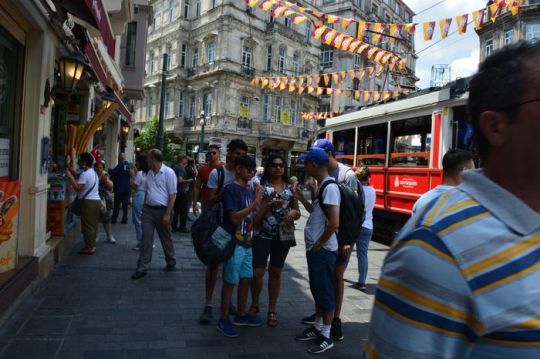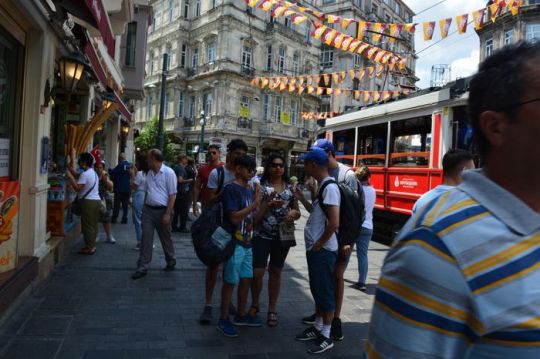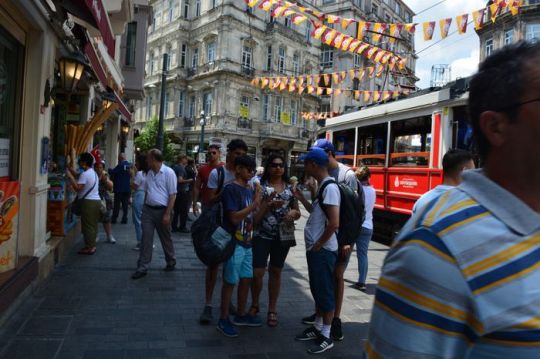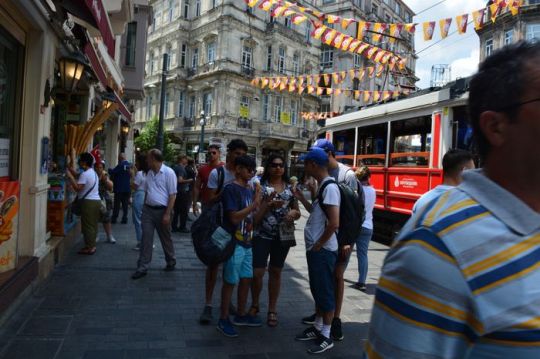#Confessions and Consequences of Bulgarias Labour Camps
Explore tagged Tumblr posts
Photo

Confessions and Consequences of Bulgaria's Labour Camps
General Mircho Spassov’s Admission
In 1990, General Mircho Spassov made a significant confession to the Prosecutor involved in the Labour Camps’ Case No. 4. He stated, “We, members of the Politburo of the Central Committee and our Ministry, vigorously copied the Soviet comrades’ methods and drew from their experience.” Spassov, who was the youngest Deputy Minister of the Ministry of the Interior in 1959, was tasked with establishing the Lovech labour camp. His admission highlights the influence of Soviet practices on Bulgaria’s oppressive system.
The Skravena Camp
In the summer of 1961, 300 women from the Lovech labour camp were transferred to Skravena in the Botevgrad region. This move was part of a broader strategy of internment and repression during the communist regime.
The System of Incarceration
During the communist era in Bulgaria, there were 22 prisons operating alongside the labour camps. These facilities held political prisoners until the fall of the regime in 1989. The conditions in these prisons and camps were often brutal, with many inmates subjected to violence, torture, and inhumane treatment.
Impunity After the Regime’s Fall
After the collapse of the communist regime in Bulgaria, those responsible for establishing the labour camps and for the murders and tortures that occurred within them largely went unpunished. This lack of accountability left many victims and their families without justice Bulgaria Private Tours Kazanlak.
Tragically, actress Nadia Dunkin, who was a former prisoner and a key witness in the labour camp case, was found dead in her home just before she was scheduled to testify in court. The investigation into her death remains unresolved, and the labour camp case itself was closed in 2002 due to a statute of limitations, preventing any further legal action against those involved.
Statistics on Political Prisoners
By July 1, 1956, statistics revealed the social backgrounds of prisoners sentenced for counter-revolutionary activities:
Poor and middle-class peasants: 1,168 (42.58%) Tradesmen: 370 (13.49%) Workers: 357 (13.01%) State employees: 349 (12.72%) Freelancers: 175 (6.38%) Kulaks (wealthy peasants): 120 (3.37%) Members of Collective Farms: 100 (3.65%) Students: 67 (2.44%) Unemployed: 37 (1.35%) The total number of sentenced prisoners stood at 2,743.
Longest-Serving Political Prisoners
Some individuals served exceptionally long sentences in the communist prisons. Notable cases include:
Vasil Uzunov: 28 years Ilija Minev: 27 years Vasil Zlatarov: 20 years These long sentences reflect the harsh realities faced by political dissidents during this dark period in Bulgarian history.
The legacy of Bulgaria’s labour camps is marked by repression, suffering, and a lack of accountability. The testimonies of former guards and prisoners reveal the harsh realities of this era. Understanding this history is crucial for recognizing the importance of human rights and ensuring that such atrocities are never repeated. The stories of the victims and survivors continue to resonate, reminding us of the need for justice and remembrance.
0 notes
Photo

Confessions and Consequences of Bulgaria's Labour Camps
General Mircho Spassov’s Admission
In 1990, General Mircho Spassov made a significant confession to the Prosecutor involved in the Labour Camps’ Case No. 4. He stated, “We, members of the Politburo of the Central Committee and our Ministry, vigorously copied the Soviet comrades’ methods and drew from their experience.” Spassov, who was the youngest Deputy Minister of the Ministry of the Interior in 1959, was tasked with establishing the Lovech labour camp. His admission highlights the influence of Soviet practices on Bulgaria’s oppressive system.
The Skravena Camp
In the summer of 1961, 300 women from the Lovech labour camp were transferred to Skravena in the Botevgrad region. This move was part of a broader strategy of internment and repression during the communist regime.
The System of Incarceration
During the communist era in Bulgaria, there were 22 prisons operating alongside the labour camps. These facilities held political prisoners until the fall of the regime in 1989. The conditions in these prisons and camps were often brutal, with many inmates subjected to violence, torture, and inhumane treatment.
Impunity After the Regime’s Fall
After the collapse of the communist regime in Bulgaria, those responsible for establishing the labour camps and for the murders and tortures that occurred within them largely went unpunished. This lack of accountability left many victims and their families without justice Bulgaria Private Tours Kazanlak.
Tragically, actress Nadia Dunkin, who was a former prisoner and a key witness in the labour camp case, was found dead in her home just before she was scheduled to testify in court. The investigation into her death remains unresolved, and the labour camp case itself was closed in 2002 due to a statute of limitations, preventing any further legal action against those involved.
Statistics on Political Prisoners
By July 1, 1956, statistics revealed the social backgrounds of prisoners sentenced for counter-revolutionary activities:
Poor and middle-class peasants: 1,168 (42.58%) Tradesmen: 370 (13.49%) Workers: 357 (13.01%) State employees: 349 (12.72%) Freelancers: 175 (6.38%) Kulaks (wealthy peasants): 120 (3.37%) Members of Collective Farms: 100 (3.65%) Students: 67 (2.44%) Unemployed: 37 (1.35%) The total number of sentenced prisoners stood at 2,743.
Longest-Serving Political Prisoners
Some individuals served exceptionally long sentences in the communist prisons. Notable cases include:
Vasil Uzunov: 28 years Ilija Minev: 27 years Vasil Zlatarov: 20 years These long sentences reflect the harsh realities faced by political dissidents during this dark period in Bulgarian history.
The legacy of Bulgaria’s labour camps is marked by repression, suffering, and a lack of accountability. The testimonies of former guards and prisoners reveal the harsh realities of this era. Understanding this history is crucial for recognizing the importance of human rights and ensuring that such atrocities are never repeated. The stories of the victims and survivors continue to resonate, reminding us of the need for justice and remembrance.
0 notes
Photo

Confessions and Consequences of Bulgaria's Labour Camps
General Mircho Spassov’s Admission
In 1990, General Mircho Spassov made a significant confession to the Prosecutor involved in the Labour Camps’ Case No. 4. He stated, “We, members of the Politburo of the Central Committee and our Ministry, vigorously copied the Soviet comrades’ methods and drew from their experience.” Spassov, who was the youngest Deputy Minister of the Ministry of the Interior in 1959, was tasked with establishing the Lovech labour camp. His admission highlights the influence of Soviet practices on Bulgaria’s oppressive system.
The Skravena Camp
In the summer of 1961, 300 women from the Lovech labour camp were transferred to Skravena in the Botevgrad region. This move was part of a broader strategy of internment and repression during the communist regime.
The System of Incarceration
During the communist era in Bulgaria, there were 22 prisons operating alongside the labour camps. These facilities held political prisoners until the fall of the regime in 1989. The conditions in these prisons and camps were often brutal, with many inmates subjected to violence, torture, and inhumane treatment.
Impunity After the Regime’s Fall
After the collapse of the communist regime in Bulgaria, those responsible for establishing the labour camps and for the murders and tortures that occurred within them largely went unpunished. This lack of accountability left many victims and their families without justice Bulgaria Private Tours Kazanlak.
Tragically, actress Nadia Dunkin, who was a former prisoner and a key witness in the labour camp case, was found dead in her home just before she was scheduled to testify in court. The investigation into her death remains unresolved, and the labour camp case itself was closed in 2002 due to a statute of limitations, preventing any further legal action against those involved.
Statistics on Political Prisoners
By July 1, 1956, statistics revealed the social backgrounds of prisoners sentenced for counter-revolutionary activities:
Poor and middle-class peasants: 1,168 (42.58%) Tradesmen: 370 (13.49%) Workers: 357 (13.01%) State employees: 349 (12.72%) Freelancers: 175 (6.38%) Kulaks (wealthy peasants): 120 (3.37%) Members of Collective Farms: 100 (3.65%) Students: 67 (2.44%) Unemployed: 37 (1.35%) The total number of sentenced prisoners stood at 2,743.
Longest-Serving Political Prisoners
Some individuals served exceptionally long sentences in the communist prisons. Notable cases include:
Vasil Uzunov: 28 years Ilija Minev: 27 years Vasil Zlatarov: 20 years These long sentences reflect the harsh realities faced by political dissidents during this dark period in Bulgarian history.
The legacy of Bulgaria’s labour camps is marked by repression, suffering, and a lack of accountability. The testimonies of former guards and prisoners reveal the harsh realities of this era. Understanding this history is crucial for recognizing the importance of human rights and ensuring that such atrocities are never repeated. The stories of the victims and survivors continue to resonate, reminding us of the need for justice and remembrance.
0 notes
Photo

Confessions and Consequences of Bulgaria's Labour Camps
General Mircho Spassov’s Admission
In 1990, General Mircho Spassov made a significant confession to the Prosecutor involved in the Labour Camps’ Case No. 4. He stated, “We, members of the Politburo of the Central Committee and our Ministry, vigorously copied the Soviet comrades’ methods and drew from their experience.” Spassov, who was the youngest Deputy Minister of the Ministry of the Interior in 1959, was tasked with establishing the Lovech labour camp. His admission highlights the influence of Soviet practices on Bulgaria’s oppressive system.
The Skravena Camp
In the summer of 1961, 300 women from the Lovech labour camp were transferred to Skravena in the Botevgrad region. This move was part of a broader strategy of internment and repression during the communist regime.
The System of Incarceration
During the communist era in Bulgaria, there were 22 prisons operating alongside the labour camps. These facilities held political prisoners until the fall of the regime in 1989. The conditions in these prisons and camps were often brutal, with many inmates subjected to violence, torture, and inhumane treatment.
Impunity After the Regime’s Fall
After the collapse of the communist regime in Bulgaria, those responsible for establishing the labour camps and for the murders and tortures that occurred within them largely went unpunished. This lack of accountability left many victims and their families without justice Bulgaria Private Tours Kazanlak.
Tragically, actress Nadia Dunkin, who was a former prisoner and a key witness in the labour camp case, was found dead in her home just before she was scheduled to testify in court. The investigation into her death remains unresolved, and the labour camp case itself was closed in 2002 due to a statute of limitations, preventing any further legal action against those involved.
Statistics on Political Prisoners
By July 1, 1956, statistics revealed the social backgrounds of prisoners sentenced for counter-revolutionary activities:
Poor and middle-class peasants: 1,168 (42.58%) Tradesmen: 370 (13.49%) Workers: 357 (13.01%) State employees: 349 (12.72%) Freelancers: 175 (6.38%) Kulaks (wealthy peasants): 120 (3.37%) Members of Collective Farms: 100 (3.65%) Students: 67 (2.44%) Unemployed: 37 (1.35%) The total number of sentenced prisoners stood at 2,743.
Longest-Serving Political Prisoners
Some individuals served exceptionally long sentences in the communist prisons. Notable cases include:
Vasil Uzunov: 28 years Ilija Minev: 27 years Vasil Zlatarov: 20 years These long sentences reflect the harsh realities faced by political dissidents during this dark period in Bulgarian history.
The legacy of Bulgaria’s labour camps is marked by repression, suffering, and a lack of accountability. The testimonies of former guards and prisoners reveal the harsh realities of this era. Understanding this history is crucial for recognizing the importance of human rights and ensuring that such atrocities are never repeated. The stories of the victims and survivors continue to resonate, reminding us of the need for justice and remembrance.
0 notes
Photo

Confessions and Consequences of Bulgaria's Labour Camps
General Mircho Spassov’s Admission
In 1990, General Mircho Spassov made a significant confession to the Prosecutor involved in the Labour Camps’ Case No. 4. He stated, “We, members of the Politburo of the Central Committee and our Ministry, vigorously copied the Soviet comrades’ methods and drew from their experience.” Spassov, who was the youngest Deputy Minister of the Ministry of the Interior in 1959, was tasked with establishing the Lovech labour camp. His admission highlights the influence of Soviet practices on Bulgaria’s oppressive system.
The Skravena Camp
In the summer of 1961, 300 women from the Lovech labour camp were transferred to Skravena in the Botevgrad region. This move was part of a broader strategy of internment and repression during the communist regime.
The System of Incarceration
During the communist era in Bulgaria, there were 22 prisons operating alongside the labour camps. These facilities held political prisoners until the fall of the regime in 1989. The conditions in these prisons and camps were often brutal, with many inmates subjected to violence, torture, and inhumane treatment.
Impunity After the Regime’s Fall
After the collapse of the communist regime in Bulgaria, those responsible for establishing the labour camps and for the murders and tortures that occurred within them largely went unpunished. This lack of accountability left many victims and their families without justice Bulgaria Private Tours Kazanlak.
Tragically, actress Nadia Dunkin, who was a former prisoner and a key witness in the labour camp case, was found dead in her home just before she was scheduled to testify in court. The investigation into her death remains unresolved, and the labour camp case itself was closed in 2002 due to a statute of limitations, preventing any further legal action against those involved.
Statistics on Political Prisoners
By July 1, 1956, statistics revealed the social backgrounds of prisoners sentenced for counter-revolutionary activities:
Poor and middle-class peasants: 1,168 (42.58%) Tradesmen: 370 (13.49%) Workers: 357 (13.01%) State employees: 349 (12.72%) Freelancers: 175 (6.38%) Kulaks (wealthy peasants): 120 (3.37%) Members of Collective Farms: 100 (3.65%) Students: 67 (2.44%) Unemployed: 37 (1.35%) The total number of sentenced prisoners stood at 2,743.
Longest-Serving Political Prisoners
Some individuals served exceptionally long sentences in the communist prisons. Notable cases include:
Vasil Uzunov: 28 years Ilija Minev: 27 years Vasil Zlatarov: 20 years These long sentences reflect the harsh realities faced by political dissidents during this dark period in Bulgarian history.
The legacy of Bulgaria’s labour camps is marked by repression, suffering, and a lack of accountability. The testimonies of former guards and prisoners reveal the harsh realities of this era. Understanding this history is crucial for recognizing the importance of human rights and ensuring that such atrocities are never repeated. The stories of the victims and survivors continue to resonate, reminding us of the need for justice and remembrance.
0 notes
Photo

Confessions and Consequences of Bulgaria's Labour Camps
General Mircho Spassov’s Admission
In 1990, General Mircho Spassov made a significant confession to the Prosecutor involved in the Labour Camps’ Case No. 4. He stated, “We, members of the Politburo of the Central Committee and our Ministry, vigorously copied the Soviet comrades’ methods and drew from their experience.” Spassov, who was the youngest Deputy Minister of the Ministry of the Interior in 1959, was tasked with establishing the Lovech labour camp. His admission highlights the influence of Soviet practices on Bulgaria’s oppressive system.
The Skravena Camp
In the summer of 1961, 300 women from the Lovech labour camp were transferred to Skravena in the Botevgrad region. This move was part of a broader strategy of internment and repression during the communist regime.
The System of Incarceration
During the communist era in Bulgaria, there were 22 prisons operating alongside the labour camps. These facilities held political prisoners until the fall of the regime in 1989. The conditions in these prisons and camps were often brutal, with many inmates subjected to violence, torture, and inhumane treatment.
Impunity After the Regime’s Fall
After the collapse of the communist regime in Bulgaria, those responsible for establishing the labour camps and for the murders and tortures that occurred within them largely went unpunished. This lack of accountability left many victims and their families without justice Bulgaria Private Tours Kazanlak.
Tragically, actress Nadia Dunkin, who was a former prisoner and a key witness in the labour camp case, was found dead in her home just before she was scheduled to testify in court. The investigation into her death remains unresolved, and the labour camp case itself was closed in 2002 due to a statute of limitations, preventing any further legal action against those involved.
Statistics on Political Prisoners
By July 1, 1956, statistics revealed the social backgrounds of prisoners sentenced for counter-revolutionary activities:
Poor and middle-class peasants: 1,168 (42.58%) Tradesmen: 370 (13.49%) Workers: 357 (13.01%) State employees: 349 (12.72%) Freelancers: 175 (6.38%) Kulaks (wealthy peasants): 120 (3.37%) Members of Collective Farms: 100 (3.65%) Students: 67 (2.44%) Unemployed: 37 (1.35%) The total number of sentenced prisoners stood at 2,743.
Longest-Serving Political Prisoners
Some individuals served exceptionally long sentences in the communist prisons. Notable cases include:
Vasil Uzunov: 28 years Ilija Minev: 27 years Vasil Zlatarov: 20 years These long sentences reflect the harsh realities faced by political dissidents during this dark period in Bulgarian history.
The legacy of Bulgaria’s labour camps is marked by repression, suffering, and a lack of accountability. The testimonies of former guards and prisoners reveal the harsh realities of this era. Understanding this history is crucial for recognizing the importance of human rights and ensuring that such atrocities are never repeated. The stories of the victims and survivors continue to resonate, reminding us of the need for justice and remembrance.
0 notes
Photo

Confessions and Consequences of Bulgaria's Labour Camps
General Mircho Spassov’s Admission
In 1990, General Mircho Spassov made a significant confession to the Prosecutor involved in the Labour Camps’ Case No. 4. He stated, “We, members of the Politburo of the Central Committee and our Ministry, vigorously copied the Soviet comrades’ methods and drew from their experience.” Spassov, who was the youngest Deputy Minister of the Ministry of the Interior in 1959, was tasked with establishing the Lovech labour camp. His admission highlights the influence of Soviet practices on Bulgaria’s oppressive system.
The Skravena Camp
In the summer of 1961, 300 women from the Lovech labour camp were transferred to Skravena in the Botevgrad region. This move was part of a broader strategy of internment and repression during the communist regime.
The System of Incarceration
During the communist era in Bulgaria, there were 22 prisons operating alongside the labour camps. These facilities held political prisoners until the fall of the regime in 1989. The conditions in these prisons and camps were often brutal, with many inmates subjected to violence, torture, and inhumane treatment.
Impunity After the Regime’s Fall
After the collapse of the communist regime in Bulgaria, those responsible for establishing the labour camps and for the murders and tortures that occurred within them largely went unpunished. This lack of accountability left many victims and their families without justice Bulgaria Private Tours Kazanlak.
Tragically, actress Nadia Dunkin, who was a former prisoner and a key witness in the labour camp case, was found dead in her home just before she was scheduled to testify in court. The investigation into her death remains unresolved, and the labour camp case itself was closed in 2002 due to a statute of limitations, preventing any further legal action against those involved.
Statistics on Political Prisoners
By July 1, 1956, statistics revealed the social backgrounds of prisoners sentenced for counter-revolutionary activities:
Poor and middle-class peasants: 1,168 (42.58%) Tradesmen: 370 (13.49%) Workers: 357 (13.01%) State employees: 349 (12.72%) Freelancers: 175 (6.38%) Kulaks (wealthy peasants): 120 (3.37%) Members of Collective Farms: 100 (3.65%) Students: 67 (2.44%) Unemployed: 37 (1.35%) The total number of sentenced prisoners stood at 2,743.
Longest-Serving Political Prisoners
Some individuals served exceptionally long sentences in the communist prisons. Notable cases include:
Vasil Uzunov: 28 years Ilija Minev: 27 years Vasil Zlatarov: 20 years These long sentences reflect the harsh realities faced by political dissidents during this dark period in Bulgarian history.
The legacy of Bulgaria’s labour camps is marked by repression, suffering, and a lack of accountability. The testimonies of former guards and prisoners reveal the harsh realities of this era. Understanding this history is crucial for recognizing the importance of human rights and ensuring that such atrocities are never repeated. The stories of the victims and survivors continue to resonate, reminding us of the need for justice and remembrance.
0 notes
Photo

Confessions and Consequences of Bulgaria's Labour Camps
General Mircho Spassov’s Admission
In 1990, General Mircho Spassov made a significant confession to the Prosecutor involved in the Labour Camps’ Case No. 4. He stated, “We, members of the Politburo of the Central Committee and our Ministry, vigorously copied the Soviet comrades’ methods and drew from their experience.” Spassov, who was the youngest Deputy Minister of the Ministry of the Interior in 1959, was tasked with establishing the Lovech labour camp. His admission highlights the influence of Soviet practices on Bulgaria’s oppressive system.
The Skravena Camp
In the summer of 1961, 300 women from the Lovech labour camp were transferred to Skravena in the Botevgrad region. This move was part of a broader strategy of internment and repression during the communist regime.
The System of Incarceration
During the communist era in Bulgaria, there were 22 prisons operating alongside the labour camps. These facilities held political prisoners until the fall of the regime in 1989. The conditions in these prisons and camps were often brutal, with many inmates subjected to violence, torture, and inhumane treatment.
Impunity After the Regime’s Fall
After the collapse of the communist regime in Bulgaria, those responsible for establishing the labour camps and for the murders and tortures that occurred within them largely went unpunished. This lack of accountability left many victims and their families without justice Bulgaria Private Tours Kazanlak.
Tragically, actress Nadia Dunkin, who was a former prisoner and a key witness in the labour camp case, was found dead in her home just before she was scheduled to testify in court. The investigation into her death remains unresolved, and the labour camp case itself was closed in 2002 due to a statute of limitations, preventing any further legal action against those involved.
Statistics on Political Prisoners
By July 1, 1956, statistics revealed the social backgrounds of prisoners sentenced for counter-revolutionary activities:
Poor and middle-class peasants: 1,168 (42.58%) Tradesmen: 370 (13.49%) Workers: 357 (13.01%) State employees: 349 (12.72%) Freelancers: 175 (6.38%) Kulaks (wealthy peasants): 120 (3.37%) Members of Collective Farms: 100 (3.65%) Students: 67 (2.44%) Unemployed: 37 (1.35%) The total number of sentenced prisoners stood at 2,743.
Longest-Serving Political Prisoners
Some individuals served exceptionally long sentences in the communist prisons. Notable cases include:
Vasil Uzunov: 28 years Ilija Minev: 27 years Vasil Zlatarov: 20 years These long sentences reflect the harsh realities faced by political dissidents during this dark period in Bulgarian history.
The legacy of Bulgaria’s labour camps is marked by repression, suffering, and a lack of accountability. The testimonies of former guards and prisoners reveal the harsh realities of this era. Understanding this history is crucial for recognizing the importance of human rights and ensuring that such atrocities are never repeated. The stories of the victims and survivors continue to resonate, reminding us of the need for justice and remembrance.
0 notes